#great modern poets
Photo



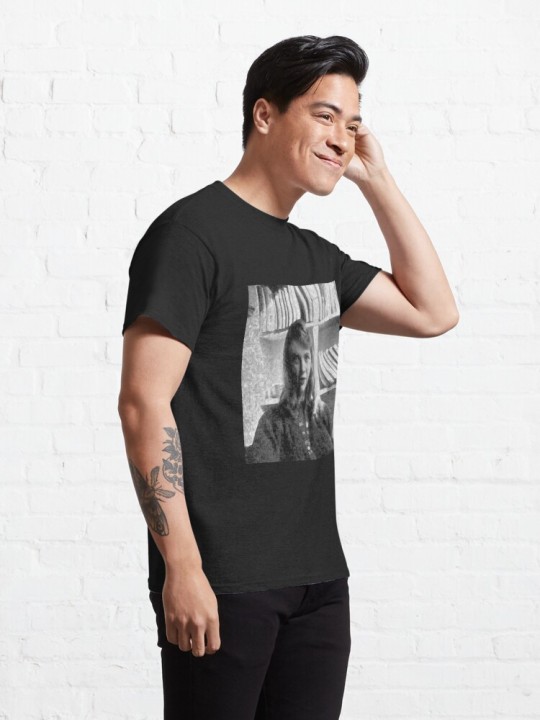


(via Sylvia Plath - #2 of #7 in a series Classic T-Shirt by RobertMKAngel) !! Sale - 25% OFF - DO NOT MISS OUT !!
#findyourthing#redbubble#sylvia plath#great modern poets#the bell jar#lady lazarus#tragedy#depression
0 notes
Text
Why do I feel like the only person on this website who is just finding out who Richard Siken is for the first time ever
#i looked him up and like... I'm sure he is a great poet and I'm fine admitting that I am not really a modern poetry head but#i must be missing something deeper
9 notes
·
View notes
Text
Doctor: There's nothing wrong with him medically.
Phaedra: Medically?
Doctor: He's just very unpleasant. And therefore incurable. I'm sorry.
Phaedra: I don't know what to do.
Doctor: Get over him.
-
Sarah Kane, Phaedra's Love (1996)
#100plays#Phaedra's love#sarah kane#1996#modern drama#modern theatre#theatre quotes#phaedra#most critical writing on Kane focuses on the darkness; on the horror and violence in her plays. it's there of course‚ and it's significant#and worthy of study. but i think too easily it obscures the lightness; Kane was‚ as Harold Pinter said at her memorial‚ a poet‚ and her#ability to use economical and concise dialogue to devastating effect has a sort of beauty to it. Kane herself rejected the popular view of#her work as bleak or 'gloomy'; particularly in the case of Phaedra's Love‚ which she referred to as her 'comedy'. it can feel jarring‚ to#hear the word comedy applied to a play which ends in such grotesque horror and spectacular violence‚ but in the manner of predecessors like#Peter Nichols or Edward Bond (Bond was a great champion and supporter of Kane's work) she mines the unthinkable and the unspeakable for#traces of jet black humour. how else does one cope with the inexhaustible horror of it all? you have to laugh.#brutalist in theme‚ minimalist in design and elegant in construction‚ Phaedra is a play that defies any simple analysis or categorization#it is a comedy just as it is a tragedy just as it is grand guignol for the postmodern age
3 notes
·
View notes
Text
Tenth-century-or-earlier Old English poem Deor is great because it's just the poet going "my problems are just like when Blorbo from my legends had problems" and providing a long list of names of people in vaguely-described situations.
And then modern scholars have to read it like "we have literally barely heard of any of these guys, who even are they" because it's been a thousand years and several massive culture shifts, and some of the poet's blorbos now only survive in his references to them.
2K notes
·
View notes
Text
I know this is controversial, even amoung the queer community, but you can call historical figures gay, or bi, or trans, if you think that label applies to them or if that's what they would be called in the modern day.
We use modern labels for people from the past all the times, for things that are far more socially constructed then queerness. We call people generals, priests, poets, kings, husbands and wives, national and regional idenities, and a while bunch of other things weren't the exact concepts that existed at the time.
If Alexander the Great is regularly called a king before our modern idea of a king existed, he can be called bisexual before our modern idea of bisexuality existed.
Queer people deserve the concept of nouns.
#queer#lgbtqia#queer history#history#alexander the great#bi#bisexuality#biseuxal#bisexual#bisexaul#trans#gay#asexual
968 notes
·
View notes
Text
Taylor Swift’s Genres
1. Quill: ‘I categorize certain songs of mine in the 'quill' style if the words and phrasings are antiquated. If I was inspired to write it after reading Charlotte Brontë, or after watching a movie where everyone is wearing poet shirts and corsets. If my lyrics sound like a letter written by Emily Dickinson's great-grandmother while sewing a lace curtain, that, to me, is writing in the quill genre. I will now give you an example of one of my songs I would categorize as quill: 'How's one to know I'd meet you where the spirit meets the bones in a faith-forgotten land? In from the snow, your touch brought forth an incandescent glow, tarnished but so grand.'
2. Fountain Pen: ‘Fountain pen style means a modern storyline or references with a poetic twist—taking a common phrase and flipping its meaning. Basically trying to paint a vivid picture of a situation down to the chipped paint on the doorframe and the incense dust on the vinyl shelf, placing yourself and whoever is listening right there in the room where it all happened: the love, the loss, everything. The songs I categorize in this style sound like confessions scribbled and sealed in an envelope that are too brutally honest to ever send. For example, 'cause there we are again in the middle of the night, we're dancing round the kitchen in the refrigerator light, down the stairs, I was there, I remember it all too well. And there we are again when nobody had to know, you kept me like a secret, but I kept you like an oath, sacred prayer and we'd swear to remember it all too well'
3. Glitter Gel Pen: ‘These lyrics are frivolous, carefree, bouncy, syncopated perfectly to the beat. Glitter gel pen lyrics don't care if you don't take them seriously because they don't take themselves seriously. Glitter gel pen lyrics are the drunk girl at the party who tells you that you look like an angel in the bathroom. It is what we need every once in awhile in these fraught times in which we live. For example, 'my ex man brought his new girlfriend, he's like oh my god, but I'm just gonna shake, and to the fella over there with the hella good hair, won't you come on over baby and we can shake, shake, shake?'
- Taylor Swift, NSAI2022
(credit to @cages-boxes-hunters-foxes for typing up the transcript. everyone say thank you Jaime!)
2K notes
·
View notes
Text
A whole bunch of random extremely specific headcanons I have been thinking about forever for dating all the different dead poets~~~
Charlie
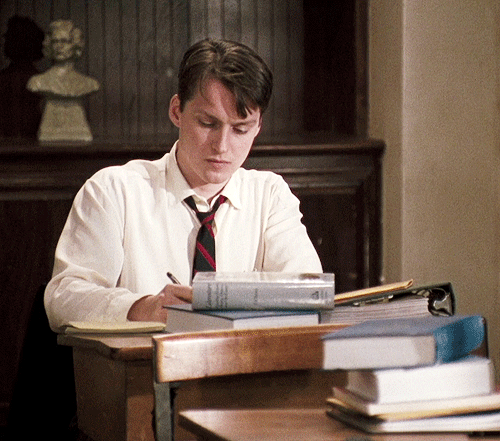
Hear me out
He’s the ‘tough’ one of the group
This is terrible but I think the dead poets made him tell Todd about Neil because no one else could bring themselves to. (I wanna write a fic about this so bad)
Charlie aggressively cares for all his friends
He needs someone to aggressively care for him
So when you guys are alone it takes time for him to lose his tough guy facade
But when he does he’s kind of a baby
Clinging to you
Wanting attention
Having someone to care for him is so foreign but he loves it and tries to care for you the same way.
You guys when you aren’t being all lovey and adorable are like partners.
Making joint decisions, just working well together overall
He likes to high five you and then kiss you
Like high five, grabs hand, pulls you into a kiss
Todd

His parents literally never keep an eye on what he does over the summer
So he’s always over at your house or you’re at his
His house is gianttttt and has a pool
Not that he cares that much
But it’s impressive to say the least
Jefferey is the only one of his family who actually knows you’re dating
Like I said his parents don’t care like at all
But Jef is actually super nice and supportive
Todd gets lonely very easily
So if you’re not together he tries to call you
If you don’t pick up he writes about you
He gets the best gifts
Not because of money or anything but because he’s so thoughtful
Everything thing he gives you has an entire train of thought behind it
Modern day AU almost every time you text him he screenshots it and sends it to Neil asking how to answer
1950’s universe he’s one of the few families with multiple television sets and lets you watch whatever you want.
He likes sleepovers
And his favorite way to cuddle is him sitting up on the bed with you laying on his stomach wrapped around him.
Touch starved.
Meeks

Gets sooooo annoyed when his glasses are dirty
He absolutely hates it
You buy him portable lense cleaner
He loves you period
Like everyone can tell this boy is in love
His love language is acts of service
So he’s always offering to help you with homework
He literally did your laundry once
He’s so down bad anything you do makes his jaw drop
On the floor
Stunned
You guys create your own secret language
He speaks it faster than you and usually say’s disgustingly sweet things
Great with kids
Great with parents
Plant dad. He loves those big vine things idk what they’re called but they wrap around the room
#this is my first time writing for the dead poets 😭#open to feedback#I’ll probably write some soon for the others eek#please I’ve been thinking on theses forever#dead poets society boyfriend scenarios#dead poets society headcanons#todd anderson x reader#Todd Anderson#charlie dalton x reader#charlie dalton#steven meeks#steven meeks x reader#dps#dps one shots#dps fandom
645 notes
·
View notes
Photo

Sitting Bull
Sitting Bull (Tatanka Iyotanka, l. c. 1837-1890) was a Hunkpapa Sioux holy man, warrior, leader, and symbol of traditional Sioux values and resistance to the United States' expansionist policies. He is among the best-known Native American chiefs of the 19th century and remains as famous today as he was when he led his people.
He is widely known for his part in the Battle of the Little Bighorn in June 1876 and his later celebrity as a performer in Buffalo Bill's Wild West Show, but, for the Sioux, Sitting Bull is celebrated as the embodiment of the four cardinal virtues of his people: courage, fortitude, generosity, and wisdom. He is also recognized for his refusal to abandon the traditions of his people and his efforts to preserve their culture. Although famous as a holy man, prophet, war chief, and hunter, Sitting Bull was also a poet and composer, as well-known among his people for his rapport with wild animals and herbal knowledge as for his leadership.
He was killed while resisting arrest at the Standing Rock Agency Reservation in South Dakota on 15 December 1890 and was buried at Fort Yates in North Dakota. His remains were exhumed by family members in the 1950s and interred at Mobridge, South Dakota, near where he was thought to have been born. Debate continues over whether these remains are those of Sitting Bull, and historians also offer differing views on his legacy. His reputation as a great leader of his people, however, is unchallenged as he continues to be recognized as a symbol of Native American pride, honor, and traditional values, as well as for his stand against injustice.
Youth & Name
Little is known of Sitting Bull's life before the age of 14. His date of birth, given as 1831, 1832, 1834, or 1837, is debated, as was his birthplace until fairly recently. He is now understood to have been born on the Yellowstone River (known to the Sioux as Elk River) in modern-day Montana and was named Jumping Badger (Hoka Psice). He quickly earned the nickname Slow (Hunkesni), owing, according to scholar Robert. M. Utley, to "his willful and deliberate ways" (6). His father was Chief Sitting Bull of the Hunkpapa Sioux, and his mother was Her-Holy-Door from a respectable Hunkpapa family. He had two sisters and a half-brother but would later adopt others as his brothers, and these are sometimes mistakenly referenced as biological siblings.
Chief Sitting Bull taught his son to ride, hunt, and shoot expertly before the boy was ten years old. Young Slow was an excellent shot with bow and arrow and became so closely associated with horses that his peers joked how he even walked as though he were on horseback. When he was 14, he joined a war party against the Crow and "counted coup" against a Crow warrior, knocking him from his horse where he was then killed by another of the party. For this act of courage – defeating an enemy without killing him – Chief Sitting Bull gave his name to his son and assumed the name Jumping Bull. "Sitting Bull" – Tatanka Iyotanka (literally "Buffalo Who Sits Down") – fit the youth's personality as, "according to fellow tribesmen, suggested an animal possessed of great endurance, his build much admired by the people, and when brought to bay, planted immovably on his haunches to fight on to the death" (Utley, 15).
Later acquaintances and writers would claim the name was given him due to his stubbornness or, according to Sioux writer and physician Charles A. Eastman, that he was given the name after forcing a buffalo calf to sit down. The name was actually given in accordance with the tradition whereby a father passed his own name to his son when the boy was recognized as attaining manhood.
Between the ages of 14 and 20, Sitting Bull led his own war parties, and his name became famous among his enemies as a formidable warrior. Utley describes him at around the age of 20:
A heavy, muscular frame, a big chest, and a large head, he impressed people as short and stocky, although he stood only two inches under six feet. His dark hair, often braided on one side with otter fur and allowed to hang loose on the other, reached his shoulders. A severe part over the center of the scalp glistened with a heavy streak of crimson paint. A low forehead surmounted piercing eyes, a flat nose, and thin lips. Although dexterous afoot and superbly agile mounted, he appeared to some as awkward and even clumsy. (19-20)
Around 1857, in a clash with an Assiniboine band, Sitting Bull spared a 13-year-old boy whom he later adopted as a younger brother. When Sitting Bull's father was killed in battle with the Crow in 1859, the boy took the name Jumping Bull and would remain by Sitting Bull's side for the rest of his life.
Continue reading...
81 notes
·
View notes
Text
“Many of the women in Heterodoxy moved in corresponding circles and maintained similar beliefs. They were “veterans of social reform efforts,” writes Scutts in Hotbed, and they belonged to “leagues, associations, societies and organizations of all stripes.” A large number were public figures—influential lawyers, journalists, playwrights or physicians, some of whom were the only women in their fields—and often had their names in the papers for the work they were performing. Many members were also involved in a wide variety of women’s rights issues, from promoting the use of birth control to advocating for immigrant mothers.
Heterodoxy met every other Saturday to discuss such issues and see how members might collaborate and cultivate networks of reform. Gatherings were considered a safe space for women to talk, exchange ideas and take action.”
In the early 20th century, New York City’s Greenwich Village earned a reputation as America’s bohemia, a neighborhood where everyone from artists and poets to activists and organizers came to pursue their dreams.
“In the Village, it was so easy to bump into great minds, to go from one restaurant to another, to a meeting house, to work for a meeting or to a gallery,” says Joanna Scutts, author of Hotbed: Bohemian Greenwich Village and the Secret Club That Sparked Modern Feminism. Here was a community where rents were still affordable, creative individuality thrived, urban diversity and radical experiments were the norm, and bohemian dissenters could come and go as they pleased.
Such a neighborhood was the ideal breeding ground for Heterodoxy, a secret society that paved the way for modern feminism. The female debating club’s name referred to the many unorthodox women among its members. These individuals “questioned forms of orthodoxy in culture, in politics, in philosophy—and in sexuality,” noted ThoughtCo. in 2017.
Born as part of the initial wave of modern feminism that emerged during the 19th and early 20th centuries with suffrage at its center, the radical ideologies debated at Heterodoxy gatherings extended well beyond the scope of a women’s right to vote. In fact, Heterodoxy had only one requirement for membership: that a woman “not be orthodox in her opinion.”
“The Heterodoxy club and the work that it did was very much interconnected with what was going on in the neighborhood,” says Andrew Berman, executive director of Village Preservation, a nonprofit dedicated to documenting and preserving the distinct heritage of Greenwich Village. “With the suffrage movement already beginning to crest, women had started considering how they could free themselves from the generations and generations of structures that had been placed upon them.”
Unitarian minister Marie Jenney Howe founded Heterodoxy in 1912, two years after she and her husband, progressive reformer Frederic C. Howe, moved to the Village. “Howe was already in her 40s,” says Scutts, “and just got to know people through her husband’s professional connections, and during meetings and networks where progressive groups were very active at the time.”
Howe’s mindset on feminism was clear: “We intend simply to be ourselves,” she once said, “not just our little female selves, but our whole big human selves.”
Many of the women in Heterodoxy moved in corresponding circles and maintained similar beliefs. They were “veterans of social reform efforts,” writes Scutts in Hotbed, and they belonged to “leagues, associations, societies and organizations of all stripes.” A large number were public figures—influential lawyers, journalists, playwrights or physicians, some of whom were the only women in their fields—and often had their names in the papers for the work they were performing. Many members were also involved in a wide variety of women’s rights issues, from promoting the use of birth control to advocating for immigrant mothers.
Heterodoxy met every other Saturday to discuss such issues and see how members might collaborate and cultivate networks of reform. Gatherings were considered a safe space for women to talk, exchange ideas and take action. Jessica Campbell, a visual artist whose exhibition on Heterodoxy is currently on display at Philadelphia’s Fabric Workshop and Museum, says, “Their meetings were taking place without any kind of recording or public record. It was this privacy that allowed the women to speak freely.”
Scutts adds, “The freedom to disagree was very important to them.”
With 25 charter members, Heterodoxy included individuals of diverse backgrounds, including lesbian and bisexual women, labor radicals and socialites, and artists and nurses. Meetings were often held in the basement of Polly’s, a MacDougal Street hangout established by anarchist Polly Holladay. Here, at what Berman calls a “sort of nexus for progressive, artistic, intellectual and political thought,” the women would gather at wooden tables to discuss issues like fair employment and fair wages, reproductive rights, and the antiwar movement. The meetings often went on for hours, with each typically revolving around a specific subject determined in advance.
Reflecting on these get-togethers later in life, memoirist Mabel Dodge Luhan described them as gatherings of “fine, daring, rather joyous and independent women, … women who did things and did them openly.”
Occasionally, Heterodoxy hosted guest speakers, like modern birth control pioneer Margaret Sanger, who later became president of the International Planned Parenthood Federation, and anarchist Emma Goldman, known for championing everything from free love to the right of labor to organize.
While the topics discussed at each meeting remained confidential, many of Heterodoxy’s members were quite open about their involvement with the club. “Before I’d even heard of Heterodoxy,” says Scutts, “I had been working in the New-York Historical Society, researching for an [exhibition on] how radical politics had influenced a branch of the suffrage movement. That’s when I began noticing many of the same women’s names in overlapping causes. I then realized that they were all associated with this particular club.”
These women included labor lawyer, suffragist, socialist and journalist Crystal Eastman, who in 1920 co-founded the American Civil Liberties Union to defend the rights of all people nationwide, and playwright Susan Glaspell, a key player in the development of modern American theater.
Other notable alumni were feminist icon Charlotte Perkins Gilman, whose 1892 short story, “The Yellow Wallpaper,” illustrates the mental and physical struggles associated with postpartum depression, and feminist psychoanalyst Beatrice M. Hinkle, the first woman physician in the United States to hold a public health position. Lou Rogers, the suffrage cartoonist whose work was used as a basis for the design of Wonder Woman, was a member of Heterodoxy, as was Jewish socialist activist Rose Pastor Stokes.
Grace Nail Johnson, an advocate for civil rights and an influential figure in the Harlem Renaissance, was Heterodoxy’s only Black member. Howe “had personally written to and invited her,” says Scutts, “as sort of a representation of her race. It’s an unusual case, because racial integration was quite uncommon at the time.”
While exceptions did exist, the majority of Heterodoxy’s members were middle class or wealthy, and the bulk of them had obtained undergraduate degrees—still very much a rarity for women in the early 20th century. Some even held graduate degrees in fields like medicine, law and the social sciences. These were women with the leisure time to participate in political causes, says Scutts, and who could afford to take risks, both literally and figuratively. But while political activism and the ability to discuss topics overtly were both part of Heterodoxy’s overall ethos, most of its members were decidedly left-leaning, and almost all were radical in their ideologies. “Even if the meetings promoted an openness to disagree,” says Scutts, “it wasn’t like these were women from across the political spectrum.”
Rather, they were women who inspired and spurred each other on. For example, about one-third of the club’s members were divorced—a process that was still “incredibly difficult, expensive and even scandalous” at the time, says Scutts. The club acted as somewhat of a support network for them, “just by the virtue of having people around you that are saying, ‘I’ve gone through the process. You can, too, and survive.’”
According to Campbell, Heterodoxy’s new inductees were often asked to share a story about their upbringing with the club’s other members. This approach “helped to break down barriers that might otherwise be there due to their ranging political views and professional allegiances,” the artist says.
The Heterodoxy club usually went on hiatus during the summer months, when members relocated to places like Provincetown, Massachusetts, a seasonal outpost for Greenwich Village residents. As the years progressed, meetings eventually moved to Tuesdays, and the club began changing shape, becoming less radical in tandem with the Village’s own shifting energy. Women secured the right to vote with the ratification of the 19th Amendment in 1920, displacing the momentum that fueled the suffrage movement; around this same time, the Red Scare saw the arrests and deportations of unionists and immigrants. Rent prices in the neighborhood also increased dramatically, driving out the Village’s bohemian spirit. As the club’s core members continued aging, Heterodoxy became more about continuing friendships than debating radical ideologies.
“These women were not all young when they started to meet,” says Scutts in the “Lost Ladies of Lit” podcast. “You know, it’s 20, 30 years later, and so they stayed in touch, but they never really found the second generation or third generation to keep it going in a new form.”
By the early 1940s, the biweekly meetings of Heterodoxy were no more. Still, the club’s legacy lives on, even beyond the scope of modern feminism.
“These days, it’s so easy to dehumanize people when you’re only hearing one facet of their belief system,” says Campbell. “But the ability to change your mind and debate freely like the women of Heterodoxy, without any public record? It’s an interesting model for rethinking the way we talk about problems and interact with other people today.”
83 notes
·
View notes
Text
Just so stories: Mommy and Daddy
In the (questionably) blessed White Picket Fenced America of 1955, things were deceptively simple:
Mommy stayed home, while Daddy was earning enough cash to buy that new Frigidaire.
Uhm. No, not really: see what happens to Mad Men's Betty Draper, the pearl-stringed suburbia matron. Not exactly a cheerful look, but perhaps a true, albeit neurotic, one.
For some unfathomable reason, one of the main dismissive arguments used against shippers reads along some very similar lines. I paraphrase, as this is a collective POV (probably stemmed from CO's laboratory and snowballed to great success across their dashboards):
'Oh, aren't they stupid! How can they expect C to follow him around the world, children in tow, at his beck and call? Or to wait for him, military wife style, as he traipses from Vegas to London to Paris to Belgium? What are these, The Fifties?'
To this Dorothy Dixon, along comes one of the Tumblrette Pundits, with a ready-made answer, always the same:
'Of course they are stupid! Of course she doesn't! Every time she is working somewhere, she brings McSideburns and The Blonde Bambino around! And McSideburns takes care of Blonde Bambino, as he should! Reality, not fantasy!'
Let alone they have absolutely no clue about the real state of play, given the almost complete, paranoid opacity reigning since at least a Certain Sad Event. Let alone that no other logical/common sense argument provided is accepted (cults seldom deal in both acceptance and common sense);
Nannies? Pah, so 1992! Family safety net? Pah, so suburban! Working parents? Pah, these people are stars, their life is a cornucopia of perks and freebies and glam!
So, in a nutshell, according to them:
Mommy is busy working and Daddy follows all along/ stays at home with Blonde Bambino, hoping that Mommy will bring enough cashola to finish that double glazing people usually install in December.
In other words, we immediately picture C as a 'starke, titanische Weib' / the strong, titanic woman German poets were so fond of back in the 1800's. Dragging along a diminutive, shy, understanding and private McSideburns, trousered Vestal extraordinaire. The rest is taboo (or should be, in my book), at any rate.
Something wrong with this vision? Yes. It's exactly the 1950's one they accuse us of espousing (we don't), but this time the male/female symbolic roles are reversed. As a result, a shrink would have many thoughts and probably a handful of questions about that need to completely castrate the Goddess's Consort to perfect oblivion. Obliterating his life, his story and even his name, for Christ's sake!
Not a good look for either C and The Prop and, to be honest, quite a weird, borderline insulting one, especially when coming from 'respectful, realistic' fans. The real utility seems to be concealing the emptiness of a Tale Forever Untold. It will be effectively replaced by the chorus with the perfect fantasy of a modern dad, a successful producer/manager and so on and so forth.
Reality is a bit different, if you just take a look on The Fratellis' Wikipedia page and follow the links:

But, but, but... 'additional personnel' (😱😱😱) - how could that be?
And yes, remember (LOL) David Eustace and the FMN shooting photo of the Happy Dynamic Duo? Happy to oblige to a friend who provided a work project (that album was postponed two or three times, then released in 2021) during COVID, probably.
The mere thought of a young, urban, sophisticated, committed and trusting couple, living and loving their best life, traveling separately or together, allowing 'spaces in their togetherness' (wasn't that The Prophet quote she liked and shared?) is something that gives them the shingles. Anything but this. Anything - even that sad The Empress and Her Additional Personnel narrative.
You see, they don't like The Obvious. At all.

106 notes
·
View notes
Text

a totally unbiased (no) and mostly serious (i guess) spoiler-free primer
I've seen a bunch of posts floating around encouraging people into the fandom, or HBO War people looking for a new fandom/show to sink their teeth into. Here's my effot to add to the propaganda, because I've been in this fandom since Nov '22, it's delightful here and I always love a new SASRH friend to chat to.
tl;dr: it's a lot of fun
premise & setting
SAS: Rogue Heroes is the story of the founding of the original* Special Air Service (SAS) of the British Army during WW2. It centres three of the initial founders, David Stirling, Blair 'Paddy' Mayne and Jock Lewes. Two of other men credited as founding the SAS, Bill Fraser and Georges Bergé also feature. Bill Stirling, David's older brother and integral to the founding of the SAS, will feature in series 2.
Series 1 is 6 episodes long, covering events from the North African campaign from May '41 through Jan '43. Series 2 has been filmed and will move the action to Europe.
Based largely on the book, SAS: Rogue Heroes by Ben Macintyre.
*it was disbanded in Oct '45, and reformed in '47, ultimately leading, through various machinations, to the modern day SAS.
historical accuracy
Somewhat more fast and loose with history than Band of Brothers, The Pacific or Masters of the Air, but not bad enough to send historians spiralling into deep despair, with one very important caveat: the depiction of Paddy Mayne. More on him and this in a moment. However, it has generally been well received. Damien Lewis (the author and historian, not the actor) said "...it's reasonably realistic. It tells a great yarn. I think they've used some artistic license, I can understand why they've done so to a certain extent... Generally they've got the equipment and the kit bang on, I think they had some very good advisers." (here)
There are some weird timeline issues, which I think is caused largely by odd pacing and editing. I'd not worry about this too much, otherwise you'll break your brain. Likewise, liberties have been taken with the geography, which I think is a bit more heinous, but ymmv.
characters: lads lads lads lads lads
after the first four, these are in no order of importance, before anyone gets on at me about their favourite. i also appreciate there are other characters but this bit was already getting really long.

david stirling (connor swindells) - the dreamer
Arrogant, manipulative, clever, charismatic bastard. David Stirling is fueled chiefly by daddy issues and an inferiority complex a mile wide. Connor Swindells walks a beautiful line between swagger and vulnerability. He does not let things like "common sense", "safety precautions" or "understanding the implications" get in the way of doing important things like flinging himself out of a plane in the middle of the desert or talking his way into army bases armed with nothing but crutches and chutzpah.

blair 'paddy' mayne (jack o'connell) - the madman
Paddy Mayne my BELOVED. Character of all time. He's a drinker, a fighter and abhors a bully. For most of the show, we see him at his most desperate and most angry and arguably most violent. HOWEVER, he's also a highly intelligent, sensitive, compassionate poet and voracious reader; if there's a bunch of poetry being quoted, it's probably Paddy doing it. He loves so very deeply. His depiction in the show is a bit of a bone of contention with family and historians - some people read him as being depicted as a violent thug only, and that's not what the real Blair Mayne was like. Which is simultaneously true and not true. Blair Mayne was an incredibly complicated man.
The other contentious-to-some point is that the show does deliberately suggest his queerness, something Jack O'Connell has talked about in interviews. Some people have taken issue with this. Either way, for those who saw the sand wrestling gifs and wanted to know if SASRH was just queerbaiting, the answer is no, actually. But don't expect anything explicit on this front.
Jack O'Connell looks like he's having a fucking fantastic time.

jock lewes (alfie allen) - the creator
In real life, Jock Lewes was nicknamed "The Wizard", how great is that? David, Paddy and David met in training and are referred to in show as "the Three Musketeers". He is basically the mediator between Paddy and David, which sounds dull, except Jock is also batshit and clever and scary. He makes all the lads do intense marches in the desert without water, but is never willing to ask someone to do what he wouldn't do. Trouble is, as mentions, he is batshit so his standards are VERY VERY HIGH. He also has a fiancee, Mirren, whomst he loves very much and their relationship is so tender and brings me to tears on the regular.

eve mansour (sofia boutella)
Eve works for French Military Intelligence and quietly drives a lot of action behind the scenes. She's a totally fictional invention for the show and I'd be madder about it if Sofia Boutella wasn't being gorgeous and smart all over the place. She is focused on the goal and is generally just. Queen.

dudley clarke (dominic west)
Not so much a member of the SAS as the guy who helps Stirling bring this plan to fruition. He's great fun, charming and affable, and just as dangerous as anyone else. Dudley Clarke doesn't get enough credit, I think.

mike sadler (tom glynn-carney)
Mike Sadler my OTHER beloved. I joke about Mike coming to fix all the stuff around my flat that doesn't work and it's because he's singlehandedly the most competent member of the entire SAS, I think. His introduction scene is the sexiest thing on the entire show. He only gets introduced in episode 3, but in my heart we have six seasons and a movie with him. He's a member of the Long Range Desert Group and knows more about navigating the landscape than anyone. The LRDG are barely part of the show (save for Mike) and are well worth looking up.
IRL Mike Sadler actually only passed away this year, at the age of 103.

eoin mcgonigal (dónal finn)
Most of what Eoin's around for in SAS: RH is to hang out being impossibly beautiful and being ride or die for Paddy Mayne. Dónal Finn and Jack O'Connell created the most beautiful relationship told in touches. Drives me mad. He's also the first one who really understands who Paddy is beyond the brash and violent front. Eoin McGonigal is certainly a creature.

bill fraser, johnny cooper, reg seekings, jim almonds, dave kershaw, pat riley
(stuart campbell, jacob mccarthy, theo barklem-biggs, corin silva, bobby schofield, jacob ifan)
Look, there are a lot of lads and I can't do them all justice. Some of these folks get a lot more to do than the others, and they're all distinct characters in their own right. There are two matched set duos, Reg & Johnny (enemies to lovers, 150k) and Jim & Pat (do not seperate). Jim & Pat were Jock's crew prior to the SAS and the way he gets them to join is basically by saying "hey, there's a really stupid and dangerous thing i want to do, you in?" and they do this:

each and every one of them is as bad as the others.

augustin jordan, georges bergé, andré zirnheld
Free French paratroopers, who Stirling is reluctantly forced into accepting into the SAS by Eve and Clarke. TBF, this is where SAS: RH really starts playing with history, though it serves the narrative well enough. Show!Augustin Jordan was a former professor of Philosophy at La Sorbonne, and is also a tall dark haired man, so you can see how Paddy Mayne is gonna struggle.
I had to use the sand wrestling gif here (that's augustin), you've probably seen it. It's a surprisingly interesting character scene, would you believe.
There are several other named characters, but I'm running out of energy.
other stuff
OK, so I've lost my thread here a bit. SAS: Rogue Heroes is fun, first and foremost. It really does fall down on the side of "Cool Boys Doing War", so if that's not your thing, maybe you'll not enjoy it. I personally do. And I think it does have some further depth to it than that, even if that's where it comes back to. I've never seen Peaky Blinders, but apparently it's a bit like that? IDK.
While it's very violent, I don't think it's as brutal as the HBO War shows. It's a much more heightened kind of drama, so there's a step removal I think, from the really visceral. That said, it's still a war drama, and it does feature some very nasty business.
soundtrack
it's mostly hard rock and if you don't like this, idk what to tell you. i fucking love it. once again though, mike sadler gets the best of this. you'll know it when you see it.
the fandom
The SAS Rogue Heroes fandom is small but it is mighty and it genuinely is very friendly. There is a Discord if you like, but you don't have to do it if Discord is not your thing.
While the overriding popular ship is Paddy/Eoin, Paddy/Augustin and Reg/Johnny are also wildly popular. That said, we are fond of a rarepair in this fandom, and I personally have embarked on a mission of shipping Mike Sadler with every other character. Everyone's very encouraging of wild ideas and aus, anything's welcome.
A few people are writing OCs, and that too is great. I encourage more of that! I don't think I've seen any x Reader yet, but never say never.
Come join us!
a brief suggested further reading
you really don't have to do any of this, but like, some of you are nerds, i get it. i also got a lot of other recs, but these are some good starters. you can hit me up for more, it's all good.
SAS: Rogue Heroes by Ben Macintyre
SAS Brothers in Arms: Churchill's Desperadoes - Damien Lewis
SAS: An Illustrated History of the SAS - Joshua Levine
Speed, Aggression, Surprise: The Untold Secret Origins of the SAS - Tom Petch
One of the Originals: Story of a Founder Member of the S.A.S. - Anthony Kemp & Johnny Cooper (Johnny Cooper's memoir and imo, if you read nothing else, read this)
The Phantom Major: The Story of David Stirling & the SAS Regiment - Virginia Cowles (this was written in 1958. There is a "rebuttal" biog, The Phoney Major by Gavin Mortimer, which also contains a lot of info, but I find Mortimer's bias against Stirling incredibly difficult to stomach. Difficult.)
Paddy Mayne - Hamish Ross (honestly, I'd not bother with other biogs of Blair Mayne unless you want to do a lot of reading around and getting cross)
Special Forces Brothers in Arms: Eoin & Ambrose McGonigal - Patric McGonigal (this is so personal and so beautiful, I cried several times reading it. written by Eoin's great-nephew. Ambrose, Eoin's older brother was part of the SBS, Special Boat Service, who are ALSO very interesting)
Gentleman Jim: The Wartime Story of a Founder of the SAS and Special Forces - Lorna Almonds-Windmill (another biog by a family member, this one is gentle and told with love)
Joy Street: A Wartime Romance in Letters - the published correspondence between Jock Lewes and Mirren Barford. A slightly different kind of book, but gosh. It really hits.
...and that's all I got for you right now. I could talk about this show for days though.
(forgot to add: my SAS RH blog is @regseekings, I posted this on here for the HBO war fandom)
youtube
#sas rogue heroes#i'm very tired now#i'm gonna go get a sandwich#sasrh reading list#sas: rogue heroes#Youtube
81 notes
·
View notes
Text
10 of my Favourite Horror (Adjacent) Movies and Why You Should Watch Them
(Not in any particular order or subgenre. TW are super vague, spoiler-free, and from my memory, but I would recommend looking up more specific ones before watching any of these if you are easily triggered. Not all triggers are listed because these are horror movies, so stuff like death and murder is to be expected.)
Let me know if y’all want a part 2, because I’ve got about 7 more! (It could have been one post if Tumblr didn’t limit my images to 10)
1. Parasite

A struggling lower class family slowly integrates itself into the household of a rich family without their knowledge.
Most of you have already seen this one, or been told to watch it. I am no different: this movie is popular for a very good reason. Divided into 3 clear acts, starting with comedy, and making its way through drama into horror. Also, great commentary on classism, very psychological at times and makes you wonder who you should really be rooting for.
Scary: 2/10
Gore: 3/10
Disturbing: 5/10
Psychological: 6/10
Actual genre: Dark comedy thriller
2. The House That Jack Built

Serial killer Jack recounts some of his most influential murders.
A bit infamous and controversial for being very messed up, but still really good. Highly psychological, with a lot of narration and use of metaphor. Especially fun if you have any knowledge of Dante’s Inferno. Definitely not one to watch if you want a protagonist to root for.
Scary: 3/10
Gore: 6/10
Disturbing: 10/10
Psychological: 8/10
Actual Genre: psychological horror art
TW: sexism, corpse mutilation
3. Creep (1&2)

A man is hired to help film messages from a dying man to his son.
I’m usually not a fan of found-footage, but there’s something special about Creep. On top of that, this is one of the few movies where I can confidently say I like the sequel more, which is shocking because the first one was amazing. Very funny and off-beat, with a sense of foreboding underlying the whole thing.
Scary: 3/10
Gore: 1/10
Disturbing: 3/10
Psychological: 4/10
Actual genre: found footage psychological horror
4. Mother!
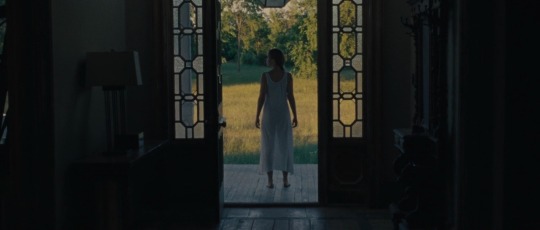
A woman and her poet husband live quietly in a secluded house away from society.
Very metaphorical and highly feminist; definitely not a movie that everyone appreciates, but if you enjoy analysis or just being really weirded out then this is a good for you. Starts slow and snowballs toward the horrific climax.
Scary: 3/10
Gore: 7/10
Disturbing: 7/10
Psychological: 8/10
Actual genre: psychological horror
TW: cannibalism
5. Perfect Blue

Mima is a young pop star looking to join the acting industry.
Brutally realistic to the point where I had to stop watching and take a walk at one point. Very much “female rage” and a protagonist that will live in your head rent free for the next 6 years (or maybe that’s just me). Very triggering in a lot of ways, but worth it if you’re not sensitive to the topics it covers.
Scary: 5/10
Gore: 4/10 (animated)
Disturbing: 8/10
Psychological: 10/10
Actual genre: psychological thriller
TW: depersonalization/derealization, nudity, stalking, rape scene (she is acting in a tv show but it is still the most uncomfortable scene of the movie), inaccurate portrayal of DID
6. Midsommar

A couple and their friends go on a vacation to their friend’s remote hometown for a Midsommar festival.
Probably the best-known out of this list, and again for a good reason. 90% of the film takes place in broad daylight, and the visuals are absolutely gorgeous. Once again will bring up the question of who is in the right and who is in the wrong (I have the answer to this question and I will fight you in dms if you’d like).
Scary: 3/10
Gore: 8/10
Disturbing: 8/10
Psychological: 7/10
Actual genre: folk horror
TW: long and graphic sex scene, nudity, close up and graphic gore, cult stuff, suicide
7. The Call

A woman moves back to her childhood home and receives a call from the woman who lived there 30 years prior.
I got really into modern Asian horror films a few months ago and this is one of my favourites. The dynamic between the protagonist and antagonist is one of my favourites, and finishing this movie felt like finishing a 3 season TV show because of how well paced it was. Really hoping there will be a sequel with the same concept, even if it is not likely.
Scary: 6/10
Gore: 3/10
Disturbing: 6/10
Psychological: 6/10
Actual genre: psychological thriller
TW: abuse
8. Incantation
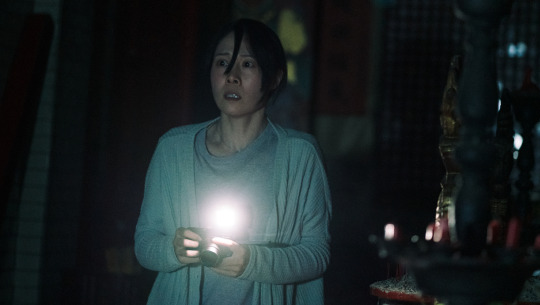
A cursed woman takes back custody of her young daughter and does everything she can to keep away the effects of her curse.
This one was popular on TikTok for a while, and for good reason. Another found footage in a more traditional sense, and a bit confusing at times, but overall a really solid scary story. Very cool effects as well.
Scary: 6/10
Gore: 4/10
Disturbing: 6/10
Psychological: 5/10
Actual genre: supernatural horror
TW: derealization
9. Pearl

A farm girl dreams about leaving home and living as a show girl.
Mia Goth is a national treasure, but we all knew that already. I watched this one before X (the actual first movie) because I didn’t know they were connected, but I much preferred this one. The Wizard of Oz vibes combined with Pearl’s unsettling behaviour made is a really creep film to watch.
Scary: 4/10
Gore: 4/10
Disturbing: 6/10
Psychological: 5/10
Actual genre: horror
TW: porn
10. The Platform
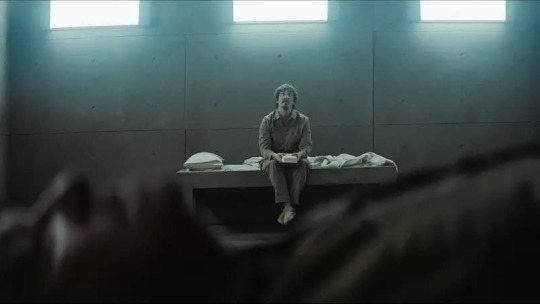
A man is stuck in a prison where a platform of food is lowered through the layers of cells for inmates to eat as they please.
I’m a sucker for psychological movies that take place in a very limited space. If you’ve ever played and enjoyed the game Presentable Liberty then I’m gonna go ahead and say you’ll like this too. Not every question is answered, but the film is more about the human condition than the prison they inhabit, so it’s not too much of a problem.
Scary: 2/10
Gore: 9/10
Disturbing: 8/10
Psychological: 9/10
Actual genre: social science fiction horror
TW: cannibalism, suicide
#parasite#the house that Jack built#creep#mother!#perfect blue#midsommar#the call#incantation#Pearl#the platform#horror movies#horror movie recommendations#psychological horror
96 notes
·
View notes
Text
Pt. 7 of Dead Poets Society Headcanons, sleeping edition
Todd can’t sleep without a stuffed animal, for the first week at Welton he tried sleeping without it because he felt he shouldn’t need it anymore. He barely slept
Neil finds it endearing that Todd sleeps with a stuffy
Neil can only sleep in boxers
Todd can only sleep in pants and long sleeves
Charlie moves a lot when he sleeps
Knox has fallen off of the bed multiple times because he also moves a lot in his sleep
Meeks and Pitts often share the bed, even tho they have their own, they prefer the presence of the other
Cameron is a very still sleeper, so badly that sometimes Charlie thinks (hopes) he might be dead
Pitts talks in his sleep, and it used to freak out Meeks but he got used to it
Knox, while he sleeps, manages to get in the weirdest positions, he wakes up and he doesn’t know how his body bends like that
Neil and Todd both prefer small spoon, so they switch every time they spoon
Charlie is a great cuddler, if anyone ever needs cuddles, they go to Charlie
(Modern au) Meeks listens to ASMR to fall asleep, mostly pencil writing or drawing, the soft scraping helps calm him
Cameron used to read before bed, but that tricked his brain into thinking any time he read, he was going to bed, so he got close to falling asleep in class a few times. He no longer reads before bed
Pitts hates mint, cannot stand it. So instead of the generic mint flavour toothpaste, he still uses the child bubblegum flavour
All the Dead Poets think this is disgusting
Sometimes Charlie steals the bubblegum toothpaste
#dead poets society#dead poets fandom#neil perry#dps fandom#dps#todd anderson#dead poets headcanons#charlie dalton#knox overstreet#steven meeks#gerard pitts#richard cameron#dps headcanons#dps boys
116 notes
·
View notes
Text
Hmmm what if…..
Listening to The Tortured Poets Department and thinking….what if this is from Karlie’s perspective?
Like girl, stop being so dramatic and tragic and let’s just BE TOGETHER!
Why are you sacrificing us to this idea of being the great poet? They don’t hold you, they don’t know you, they don’t decode you or troll you like me.
I’m the one who actually knows you….stop picking the fans/industry and choose us instead!
You left your typewriter at my apartment
Straight from the tortured poets department
I think some things I never say
Like, who uses typewriters anyway?
But you're in self-sabotage mode
Throwin' spikes down on the road
But I've seen this episode and still loved the show
Who else decodes you?
And who's gonna hold you like me?
And who's gonna know you if not me?
I laughed in your face and said
You're not Dylan Thomas, I'm not Patti Smith
This ain't the Chelsea Hotel, we're modern idiots
And who's gonna hold you like me?
Nobody, no-fucking-body, nobody
You smoked then ate seven bars of chocolate
We declared Charlie Puth should be a bigger artist
I scratch your head, you fall asleep
Like a tattooed Golden Retriever
But you awaken with dread, pounding nails in your head
But I've read this one where you come undone
I chose this cyclone with you
And who's gonna hold you like me? (Who's gonna hold you, who's gonna hold you?)
And who's gonna know you like me? (Who's gonna know you?)
I laughed in your face and said
You're not Dylan Thomas, I'm not Patti Smith
This ain't the Chelsea Hotel, we're modern idiots
And who's gonna hold you like me?
No-fucking-body, nobody (who's gonna hold you, who's gonna hold you?)
(Who's gonna hold you, gonna know you, won't control you?) Nobody
Sometimes I wonder if you're gonna screw this up with me
But you told Lucy you'd kill yourself if I ever leave
And I had said that to Jack about you so I felt seen
Everyone we know understands why it's meant to be
'Cause we're crazy
So tell me, who else is gonna know me?
At dinner, you take my ring off my middle finger
And put it on the one people put wedding rings on
And that's the closest I've come to my heart exploding
Who's gonna hold you? (Who?) Me
Who's gonna know you? (Who?) Me
And you're not Dylan Thomas, I'm not Patti Smith
This ain't the Chelsea Hotel, we're two idiots
Who's gonna hold you?
You left your typewriter at my apartment
Straight from the tortured poets department
Who else decodes you? (Who? Who?)
Source: LyricFind
Songwriters: Jack Antonoff / Taylor Swift
The Tortured Poets Department lyrics © Sony/ATV Music Publishing LLC
See all
46 notes
·
View notes
Text
Emily Wilson is a professor of classical studies at the University of Pennsylvania. Her translation of the “Odyssey” was published in 2017, and her translation of the “Iliad” will be published in September.
June 28, 2023
In one of the most moving and memorable scenes from the “Iliad,” the great Trojan warrior Hector says farewell to his wife, Andromache, who has urged him not to risk his life by fighting on the plain. He gives their baby back to her, tells her to go home, and reiterates his decision to advance on the enemy.
Around 100 complete English translations of the “Iliad” have been published over the past 400 years. Their variety shows no clear trajectory of cultural change: Some of the more recent Homers are more archaic and less idiomatic than many earlier ones, but some are not. A wide variety of forms are used to “translate” the dactylic hexameter of the original, including prose and free verse as well as several poetic meters.
The translations reflect a wide range of possible interpretations of this short passage. Is Hector harshly scolding Andromache for offering advice about the war, despite her gender? Or is he treating her with gentle pity? Is she worried only about her husband’s death, or is she also concerned about her own imminent enslavement and their baby’s slaughter? Are her concerns valid? Does the warrior risk his life despite his love for his family, or because of it? Why must men fight? Why must women weave? How strange, or how familiar, is the society of the poem?
Each of these translations — along with dozens more — suggests a different understanding of the central themes of courage, marriage, fate and death.
The Original ‘Iliad’ 6. 482-497
The original poem is composed in beautifully musical, metrically regular dactylic hexameter, and designed to be performed out loud: It is poetry for the mouth and ear, not the page.
The scene evokes the complex emotions of three separate characters — the frightened baby, the woman, the man — and it also includes a silent fourth, the enslaved nurse.
The text provides a vivid account not only of Hector’s words, but also of his actions. At the end of the passage, he picks up again the shining helmet that he took off because its plume frightened his little son, and in so doing, he becomes again “bright-helmed Hector,” as the traditional formula of heroic poetry describes him: He again assumes his role and costume as a man who lives and will die by war.
Before this passage, Andromache has pleaded with Hector to adopt a safer strategy, rather than go to almost certain death by meeting the enemy on the open plain. As she reminds him, Hector is risking much more than his own life. His death will entail his wife’s rape and enslavement, their baby’s violent death and the sack of their city.
Hector’s response suggests a fascinatingly contradictory attitude toward his own actions. His firm tone could suggest brash confidence and/or a man steeling himself for a heartbreaking choice to prioritize his own honor over the lives and freedom of everyone he loves — a choice that becomes possible only when presented as no choice at all.
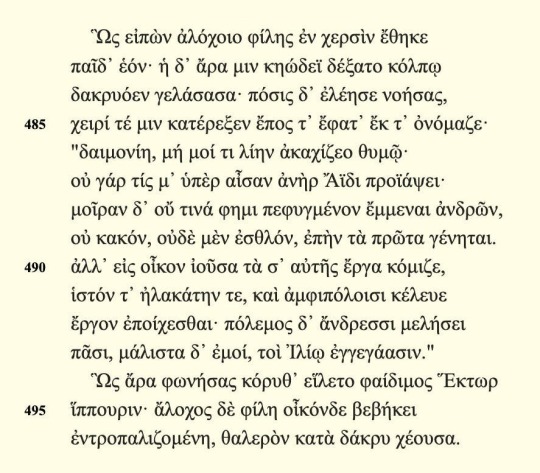
George Chapman (1611)
The first complete translation into English, by the playwright and erstwhile soldier Chapman, creates a staunch, fatalistic version of Hector, reflecting the poet’s interest in Stoicism. Chapman uses a metrical form that was already old-fashioned in his day, “fourteeners,” or rhyming heptameters; the original does not rhyme.
The translation expands on the original in ways that may be startling by modern norms — for instance, by rendering the single word for “tearfully,” dakruon, as “fresh streams of love’s salt fire.”
…This said, th’ heroic sire
Gave him his mother; whose fair eyes fresh streams of love’s salt fire
Billow’d on her soft cheeks, to hear the last of Hector’s speech
,In which his vows compris’d the sum of all he did beseech
In her wish’d comfort. So she took into her od’rous breast
Her husband’s gift; who, mov’d to see her heart so much oppress’d,
He dried her tears, and thus desir’d: “Afflict me not, dear wife,
With these vain griefs. He doth not live, that can disjoin my life
And this firm bosom, but my fate; and fate, whose wings can fly?
Noble, ignoble, fate controls. Once born, the best must die,
Go home, and set thy housewif’ry on these extremes of thought;
And drive war from them with thy maids; keep them from doing nought.
These will be nothing; leave the cares of war to men, and me
In whom, of all the Ilion race, they take their high’st degree.”
On went his helm; his princess home, half cold with kindly fears;
When ev’ry fear turn’d back her looks, and ev’ry look shed tears.
Alexander Pope (1715)
Pope’s translation, into elegant rhyming pentameter couplets, was a best seller in the 18th century and remains a classic. Pope adds a great many details entirely of his own invention, inserting anachronistic notions of marriage (“my soul’s far better part”), and explaining emotional responses that are unstated or ambiguous in the original: For example, Homer does not explain why Andromache is crying, but Pope clarifies that it is from “fear.” Pope invents some wonderful aphorisms that have no basis in the original but add zing to the couplet, such as “the first in danger as the first in fame.”
He spoke, and fondly gazing on her charms,
Restored the pleasing burden to her arms;
Soft on her fragrant breast the babe she laid,
Hush’d to repose, and with a smile survey’d.
The troubled pleasure soon chastised by fear,
She mingled with a smile a tender tear.
The soften’d chief with kind compassion view’d,
And dried the falling drops, and thus pursued:
”Andromache! my soul’s far better part,
Why with untimely sorrows heaves thy heart?
No hostile hand can antedate my doom,
Till fate condemns me to the silent tomb.
Fix’d is the term to all the race of earth;
And such the hard condition of our birth:
No force can then resist, no flight can save,
All sink alike, the fearful and the brave.
No more — but hasten to thy tasks at home,
There guide the spindle, and direct the loom:
Me glory summons to the martial scene,
The field of combat is the sphere for men.
Where heroes war, the foremost place I claim,
The first in danger as the first in fame.”
Thus having said, the glorious chief resumes
His towery helmet, black with shading plumes.
His princess parts with a prophetic sigh,
Unwilling parts, and oft reverts her eye
That stream’d at every look; then, moving slow,
Sought her own palace, and indulged her woe.
Samuel Butler (1898)
The prose version by the 19th-century novelist and satirist Butler — a lifelong bachelor — suggests a very different set of assumptions about women, metaphysics, emotions (“his heart yearned towards her” for eleēse, “pitied”) and even time management (“daily duties” for erga, “tasks”). Butler treats Homer’s repeated epithets as skippable, so that phaidimos Hector (“glorious Hector”) becomes simply “he.”
With this he laid the child again in the arms of his wife, who took him to her own soft bosom, smiling through her tears. As her husband watched her his heart yearned towards her and he caressed her fondly, saying, “My own wife, do not take these things too bitterly to heart. No one can hurry me down to Hades before my time, but if a man’s hour is come, be he brave or be he coward, there is no escape for him when he has once been born. Go, then, within the house, and busy yourself with your daily duties, your loom, your distaff, and the ordering of your servants; for war is man’s matter, and mine above all others of them that have been born in Ilion.” He took his plumed helmet from the ground, and his wife went back again to her house, weeping bitterly and often looking back towards him.
Robert Fagles (1990)
Fagles’s best-selling translation, in unmetrical free verse, uses many familiar American idioms and clichés (such as “smiling through her tears,” or “filled with pity,” a metaphor absent from the original). He softens the brusqueness of Hector’s final speech to his wife by rendering daimonie as the gentle “dear one,” and adding “trying to reassure her” and “please,” neither of which appears in the Greek.
Fagles makes Hector’s most iconic phrase, that men must be warriors, sound much chattier and wordier than the original, spreading it over two lines: “as for the fighting / men…”
… So Hector prayed
and placed his son in the arms of his loving wife.
Andromache pressed the child to her scented breast,
smiling through her tears. Her husband noticed,
and filled with pity now, Hector stroked her gently,
trying to reassure her, repeating her name: “Andromache,
dear one, why so desperate? Why so much grief for me?
No man will hurl me down to Death, against my fate.
And fate? No man alive has ever escaped it,
neither brave man nor coward, I tell you —
it’s born with us the day that we are born.
So please go home and tend to your own tasks,
the distaff and the loom, and keep the women
working hard as well. As for the fighting,
men will see to that, all who were born in Troy
but I most of all.”
Hector aflash in arms
took up his horsehair-crested helmet once again.
And his loving wife went home, turning, glancing
back again and again and weeping live warm tears.
Emily Wilson (2023)
In my own translation of the “Iliad,” I echo the metrical regularity of the original by using unrhyming iambic pentameter. I thought long and hard about the multiple narrative perspectives suggested by the original poem, and its resonant ambiguities; in this passage, for example, I use both “beloved” and “loving” for phile — a word that could suggest either, or both — because the feelings of both the wife and the husband are at stake.
The rhetorically punchy qualities of Hector’s speech seemed essential, as well as Hector’s insistent focus on his own defining identity as a warrior. Hector is a deeply loving father and husband who makes the choice to leave his family to almost-certain enslavement and death.
As I read the Greek, we feel heartbroken for all three members of the family (or for all four, counting the silent nurse) — and all the more so because there is no hint of sentimentality in the language, no softness in Hector’s final words. The emotions are sketched with extraordinary concision: The only explicit feeling is Hector’s pity for Andromache’s tears (eleēse), but a world of other emotions is evoked through gesture.
…With these words,
he gave his son to his beloved wife.
She let him snuggle in her perfumed dress,
and tearfully she smiled. Her husband noticed
and pitied her. He took her by the hand
and said to her,
“Strange woman! Come on now,
you must not be too sad on my account.
No man can send me to the house of Hades
before my time. No man can get away
from destiny, first set for us at birth,
however cowardly or brave he is.
Go home and do the things you have to do.
Work on your loom and spindle and instruct
the slaves to do their household work as well.
War is a task for men — for every man
born here in Troy, but most especially, me.”
When he had finished speaking, glorious Hector
picked up his helmet with its horsehair plume.
His loving wife set off for home, but kept
twisting and turning back to look at him.
More and more tears kept flooding down her face.
#emily wilson#quotes#the iliad#hektor#andromakhe#hektor x andromakhe#i know not everyone has nyt subscription but this is fascinating re:translation so i have provided the whole text under the read more :)
267 notes
·
View notes
Text


This contemporary 1961 updated mid-century modern home in beautiful Greenwich, Connecticut is a great place to showcase an art collection or your own art. 3bds, 3ba, $2.250M.


I wouldn't buy the house unless that wire guy conveyed. The house was updated, but still retains the MCM vibe. The white walls are the perfect backdrop for colorful art.

The dining area is 2 steps up, so I guess it would qualify as a sunken living room.

Nice room, gets natural light, and it looks like the shelving is built-in.

Another 2-step platform leads to the stairs and the kitchen is right thru a doorway.

The kitchen is roomy and looks like it has the original cabinetry plus a whole wall of storage.

Plenty of space for everyday dining with a beautiful display wall.

Love the colors of the library wall. Every room has a door to an outside area.

Original stairs in the hall lead to a 2nd level.


On this floor is a family room with a nice storage unit. The large room is divided by a free standing bookshelf and note the stairs to a 3rd level and a balcony on the right.

On the other side of the divider is a workspace. Sliding stores open to a terrace on both sides.

Looking down on the space from the balcony.


Also on the 2nd level is this beautiful primary bedroom. Love the pink tiles, beams, and skylight.

Dressing room/closet has a makeup table.

One of the secondary bedrooms is a nice space.

Nice simple bath.

The home also has a sauna.

Barn with a guest space.

One of several working sheds on the property- the original owner was a children's poet and her husband, an architect.

5.60 acres of beautiful wooded property.
82 notes
·
View notes